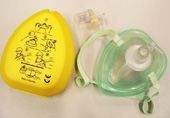October 16th, 2011 by Toni Brayer, M.D. in News
1 Comment »

 The 2nd degree manslaughter trial of Dr. Conrad Murray, the doctor who attended Michael Jackson at the time of his death June 25, 2009, is now underway in LA. The testimony that is taking place is certainly revealing of the last day of Mr. Jackson’s life. Michael Jackson died of an acute Propofol overdose and the toxicology report also revealed Valium, Lorezepam, Versed, Lidocaine and Ephedrine in his system. There were no illegal drugs.
The 2nd degree manslaughter trial of Dr. Conrad Murray, the doctor who attended Michael Jackson at the time of his death June 25, 2009, is now underway in LA. The testimony that is taking place is certainly revealing of the last day of Mr. Jackson’s life. Michael Jackson died of an acute Propofol overdose and the toxicology report also revealed Valium, Lorezepam, Versed, Lidocaine and Ephedrine in his system. There were no illegal drugs.
Propofol is used as a powerful anesthetic and is given intravenously. It is not a drug that would be used outside of a medical facility or hospital. Versed (Midazolam) is also a drug that is used for conscious sedation for procedures in hospitals.
Dr. Conrad Murray is a cardiologist and served as Michael’s personal physician. He was trained at Meharry Medical College and did post graduate work at Mayo Clinic and Loma Linda University Medical Center in California. He studied Cardiology at Read more »
*This blog post was originally published at EverythingHealth*
June 1st, 2011 by Paul Auerbach, M.D. in Health Tips, Research
No Comments »

 When a person performs cardiopulmonary (heart and lung) resuscitation (CPR), it is sometimes recommended to provide rescue breathing. This is certainly the case when the primary cause of the victim’s difficulty relates to failure to breathe adequately, such as with a drowning episode. When CPR first arrived on the landscape, laypersons were trained to perform mouth-to-mouth breathing (for adults) or mouth-to-mouth and nose breathing (for infants and small children).
When a person performs cardiopulmonary (heart and lung) resuscitation (CPR), it is sometimes recommended to provide rescue breathing. This is certainly the case when the primary cause of the victim’s difficulty relates to failure to breathe adequately, such as with a drowning episode. When CPR first arrived on the landscape, laypersons were trained to perform mouth-to-mouth breathing (for adults) or mouth-to-mouth and nose breathing (for infants and small children).
Following growing concern about transmission of diseases from blood and body fluids, laypersons were introduced to using masks or something similar to allow them to provide breathing assistance (“artificial respiration,” “artificial ventilation,” “rescue breathing,” etc.) to non-breathing persons. Masks have been used for decades by professional rescuers for ventilating patients, often in conjunction with the use of bags in a “bag-valve-mask” configuration. The valve between the mask and bag provides for one-way flow and prevents the backwash of vomitus, blood, liquid from the lungs, or other fluids that might diminish the effectiveness of the technique.
A number of excellent masks and face shields are available on the market for rescuers to be able to (relatively) safely blow air into a victim’s lungs. One example is Read more »
This post, CPR: Mouth-to-Mouth Breathing May Have Some Advantages Over Mask-Assisted Breathing, was originally published on
Healthine.com by Paul Auerbach, M.D..
 The 2nd degree manslaughter trial of Dr. Conrad Murray, the doctor who attended Michael Jackson at the time of his death June 25, 2009, is now underway in LA. The testimony that is taking place is certainly revealing of the last day of Mr. Jackson’s life. Michael Jackson died of an acute Propofol overdose and the toxicology report also revealed Valium, Lorezepam, Versed, Lidocaine and Ephedrine in his system. There were no illegal drugs.
The 2nd degree manslaughter trial of Dr. Conrad Murray, the doctor who attended Michael Jackson at the time of his death June 25, 2009, is now underway in LA. The testimony that is taking place is certainly revealing of the last day of Mr. Jackson’s life. Michael Jackson died of an acute Propofol overdose and the toxicology report also revealed Valium, Lorezepam, Versed, Lidocaine and Ephedrine in his system. There were no illegal drugs.



 When a person performs cardiopulmonary (heart and lung) resuscitation (CPR), it is sometimes recommended to provide rescue breathing. This is certainly the case when the primary cause of the victim’s difficulty relates to failure to breathe adequately, such as with a drowning episode. When CPR first arrived on the landscape, laypersons were trained to perform mouth-to-mouth breathing (for adults) or mouth-to-mouth and nose breathing (for infants and small children).
When a person performs cardiopulmonary (heart and lung) resuscitation (CPR), it is sometimes recommended to provide rescue breathing. This is certainly the case when the primary cause of the victim’s difficulty relates to failure to breathe adequately, such as with a drowning episode. When CPR first arrived on the landscape, laypersons were trained to perform mouth-to-mouth breathing (for adults) or mouth-to-mouth and nose breathing (for infants and small children).







